This Forum will close on Wednesday 27 March, 2024. Please refer to the announcement on the Discussions page for further detail.
Peach disease - please help ID
Hi,
I’m new here and would be most grateful for your help. We planted a Redhaven peach tree in our large unheated greenhouse directly in the ground two winters ago. It established well but struggled with spider mites the first year and ended up shedding all its leaves and going dormant in August already.
This year it got off to a good start. It had some aphids but they’re all gone now. I’ve treated preventatively for spider mites with predatory mites, and so far there’s no sign of them. But then the older leaves started developing purple spots, turning yellow and falling off. This has been going on for a couple of months now. It is still producing healthy new foliage, but the older leaves continue to go spotty and dropping off. I’m worried that it will exhaust itself again before the end of the season.
Any idea what is causing this and what I can do about it?
Thank you in advance,
Juli
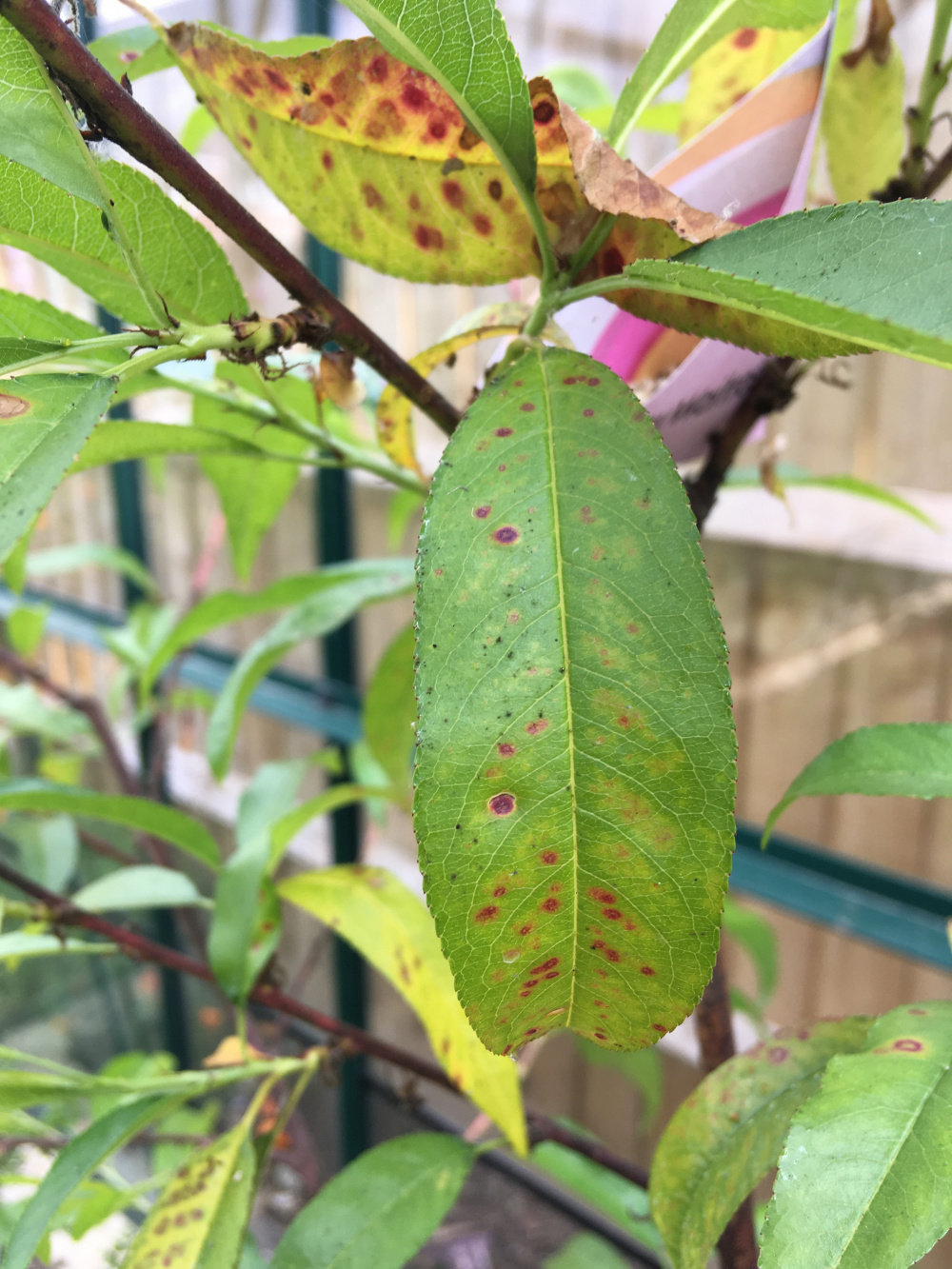
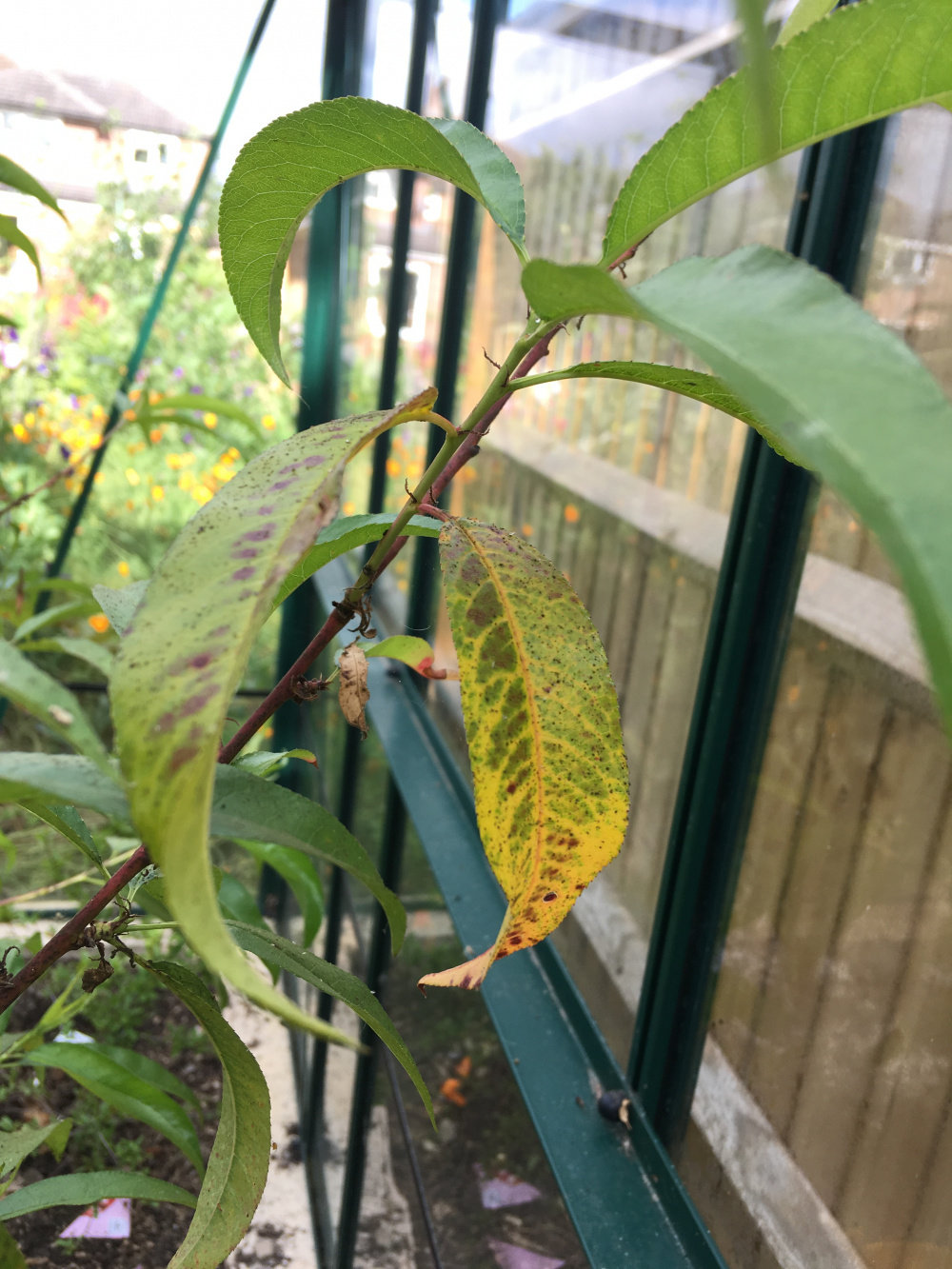
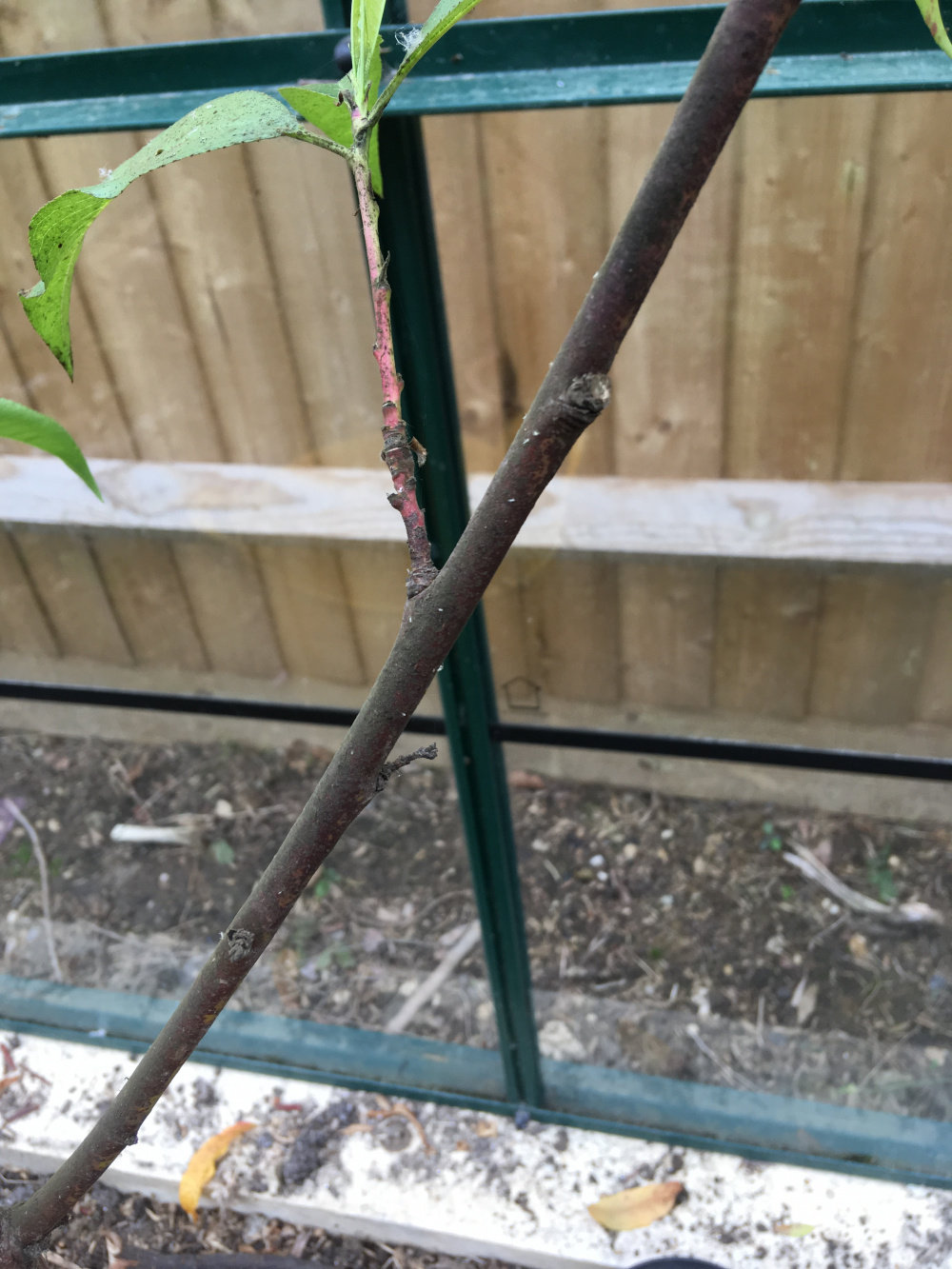
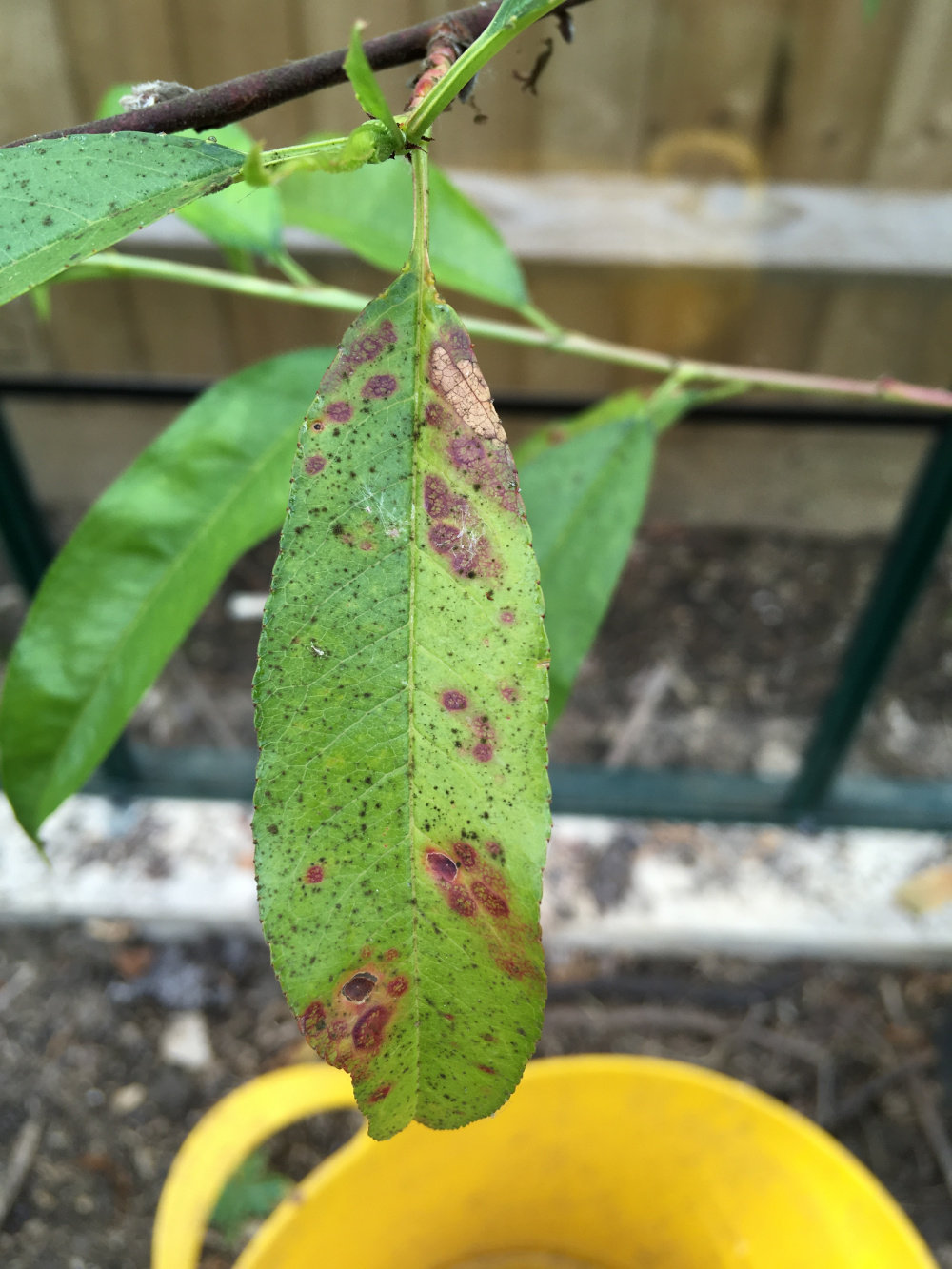
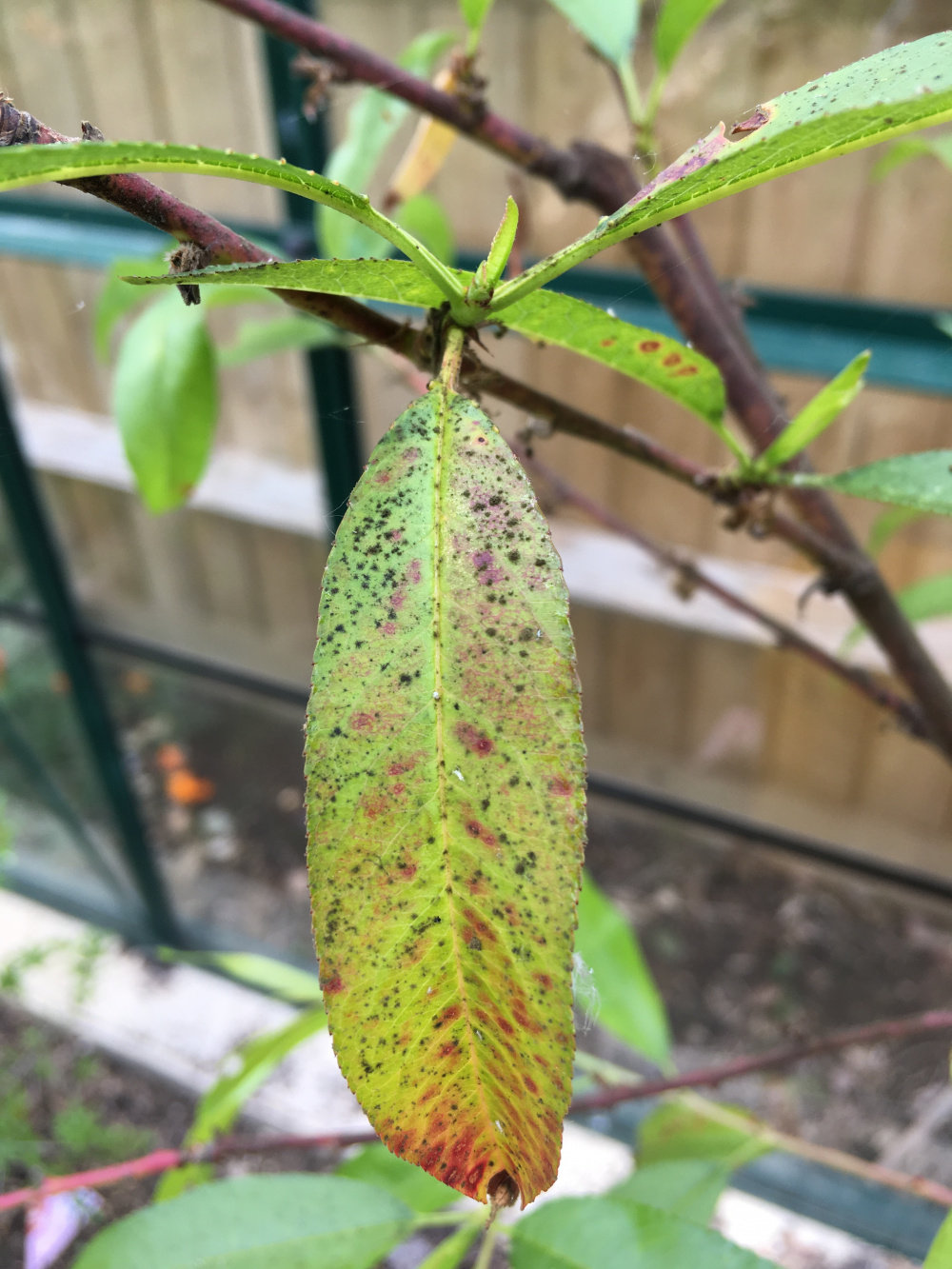
I’m new here and would be most grateful for your help. We planted a Redhaven peach tree in our large unheated greenhouse directly in the ground two winters ago. It established well but struggled with spider mites the first year and ended up shedding all its leaves and going dormant in August already.
This year it got off to a good start. It had some aphids but they’re all gone now. I’ve treated preventatively for spider mites with predatory mites, and so far there’s no sign of them. But then the older leaves started developing purple spots, turning yellow and falling off. This has been going on for a couple of months now. It is still producing healthy new foliage, but the older leaves continue to go spotty and dropping off. I’m worried that it will exhaust itself again before the end of the season.
Any idea what is causing this and what I can do about it?
Thank you in advance,
Juli





0
Posts
I will do some reading about shothole disease. I might try some antifungal home remedied (milk? garlic? baking soda?) but I don’t like my chances...
Hi and Welcome!
I'm sorry to hear about the problem with your peach tree. It does look like a fungal/bacterial leaf spot.
First of all, I would discourage you from using the Bordeaux Mixture. The Bordeaux Mixture is a mix of heavy metals which will gradually accumulate in your soil. Many studies have shown that it is damaging to the soil, the earthworms, and the many beneficial microorganisms, not to mention the link to human health. So, in the long term, it will damage the soil and your tree's roots will cause all sorts of new problems. I would highly recommend using only garden chemicals that are approved, organic is even better - help preserve the wildlife. Sad to hear that people are promoting a chemical that was banned for obvious reasons. Unless you are a commercial gardener who grows often for profit only, surely you love your plants and the wildlife it attracts.
I have recently moved to a property where almost every tree and shrub is affected by some sort of disease, incl. fire blight & leaf blotch. So I’ve done a lot of research to find a way to keep them alive organically and had great success so far. (only struggling with my potted plants at the moment).
Here is the simple principle that I have applied in my garden. Similar to humans, plants have a sort of immune system and if it's out of balance, the plant becomes susceptible to diseases. If you can try to create the optimal environment for your sick tree and give it some extra love it could live a very long life and even potentially recover and heal itself (- there was a case with organic orchard grower in the USA where they managed to recover most trees from leaf blotch and fire blight with home-brewed tonics/teas made of wild plants).
Most of the health comes from the roots. So first of all, you need to make sure that the roots are happy. You wrote that the tree is in the ground in the greenhouse, yet on the last pic it looks like it’s in a plastic pot. Have you replanted it? If it’s still in the ground find out what soil type it prefers and amend accordingly, make sure the roots are kept healthy and have enough air. You will most likely need to feed it, depending on the soil condition in your greenhouse; look up the correct nutritional balance for your type of tree, don't just use a general fertiliser. For leaf spot disease you need good aeration – so the fact that it is in a greenhouse is not very good, this disease loves humid conditions. Also, I believe peaches love full sun. Check the RHS website if they have your type listed and look up the care tips.
I would recommend boosting your plant’s health with some of the organic booster feeds available on the market. I feed all my plants with Growchar and it's absolutely fabulous (it also has mycorrhizal fungi in it) - it's expensive but worth every penny! There are two routes to hit back the disease, via the soil or through the leaves. For the leaves, I would recommend using a Neem oil solution. Neem, in my experience, is the best fungicide and pesticide; it has antimicrobial and antibacterial properties and is harmless to beneficial insects (don't spray when in flower). Look it up on Google. I also use neem cake but only for very sick plants because I have so many and it can get very expensive, mix it in the soil - it's amazing - same benefits absorbed through roots! There is another promising product that is currently being researched in Austria which I bought but have not tried yet. It’s an extract made of Liverworts that you spray on the leaves, apparently, it's immune to fungus and bacteria and is generally a great plant booster. Then, of course, get rid of the fallen leaves as soon as you can.
I hope this helps! Happy gardening!
Thank you very much too, Jucati, for taking the time to share your experience and advice.
I'm afraid I cheated slightly with that last photo, thinking that it would take too long to explain
I'll tell you a bit more about our setting. Our greenhouse is massive (20x10ft) and completely on soil, apart from the concrete footings. It's quite tall as well, so a good amount of air in it. I have 6 solar roof vents and 4 manual vents in the sides. On warm days I leave all vents and the double doors open for good air circulation, but on cooler days I tend to leave it shut (apart from the roof vents which are only shut when it's really cold) to keep the warmth in. Maybe I should leave it open more?
Our soil is lovely rich clay soil with plenty of organic material. Nutrient-wise, the tree should be very happy. Everything else is thriving. The greenhouse is shaded by trees first thing in the morning but from mid-morning onwards is in full sun for the rest of the day.
Initially I thought that maybe the tree wasn't getting enough water, given that it is in the greenhouse and doesn't get any rain, so I started watering it quite a lot (a full watering can every few days), but then someone else advised that I may be overwatering it and making things worse, so I stopped. But to be honest, I didn't see any direct correlation between when the spots and leaf drop have been worst and when I have or haven't been watering.
I suspect it is more to do with the weather (temperature and humidity), so I'll be curious to see how it goes over the next little while now that it's finally getting warmer and drier.
I have been spraying with neem oil actually. It is very effective against aphids. I'm not sure how much of a difference it is making to the spots / leaf drop. After doing some reading I might start adding garlic and baking soda to the mix. Jucati, how often do you spray?
(Just a little side note, I found out the hard way that more neem oil is NOT better. Normally I use 10ml liquid castile soap and 5ml of neem oil in 1 litre of water. When I tried adding more neem oil than that (probably double) it didn't dissolve properly and I ended up spraying almost pure neem oil on the plants when I got to the end of the bottle, and the plants did not like it at all. Basically, it burned the leaves.
And apparently peppers don't like it even at the normal dosage. I moved my peppers under the peach tree and when I last sprayed the peach tree the neem mixture dripped onto the peppers and turned the leaves black in places where the liquid pooled.
So now I stick very definitely to the normal dosage and avoid spraying any on the peppers.)
I might try the milk as well, but separately. Apparently it is very effective against fungal diseases when sprayed in full sun, because the sunlight causes a chemical change in the milk protein which releases free radicals which then damage the fungus. I might try that this afternoon seeing as it's a sunny day today
I will also move my son's little tree in the pot out of the greenhouse and put it in a sunny spot outside.
Thank you both again. I will report back.
Juli